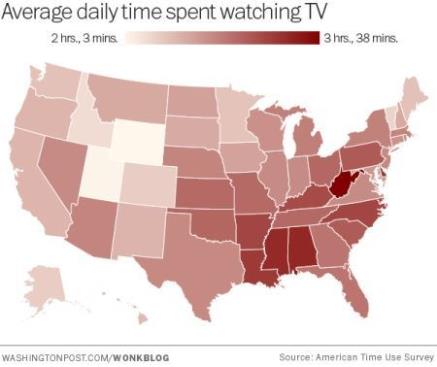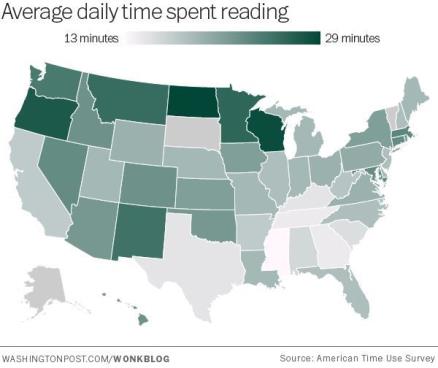No time for brain fitness and mental exercise? Solution: Watch less TV
 10 maps that show how much time Americans spend grooming, eating, thinking and praying (The Washington Post):
10 maps that show how much time Americans spend grooming, eating, thinking and praying (The Washington Post):
“The American Time Use Survey is a treasure trove of data for understanding how Americans spend their days. The survey is essentially a national diary of how we work, play, sleep and even groom ourselves. The data can be parsed at the state level too. Below are 10 maps showing the sometimes surprising regional variation in American time use…
Nearly the entire leisure time difference between Utah and West Virginia can be explained by TV viewing habits in those states — West Virginians spend about 90 more minutes a day glued to the tube (more) than Utah residents. Over the course of a year that works out to difference of 68 8‑hour workdays — let that one sink in.”
Contrast TV watching with reading habits: a range of 123–218 minutes vs. 13–29 minutes per day, respectively.

Related article:



The evidence that staying physically fit keeps your brain healthy into old age is especially compelling. Most concrete is the link between aerobic fitness and cognitive preservation. Workouts needn’t be extreme either: 30–45 minutes of brisk walking, three times a week, can help fend off the mental wear and tear and delay the onset of dementia. It pays to get used to regular exercise early, though. The protective effects are clearest before the cognitive signs of old age kick in .